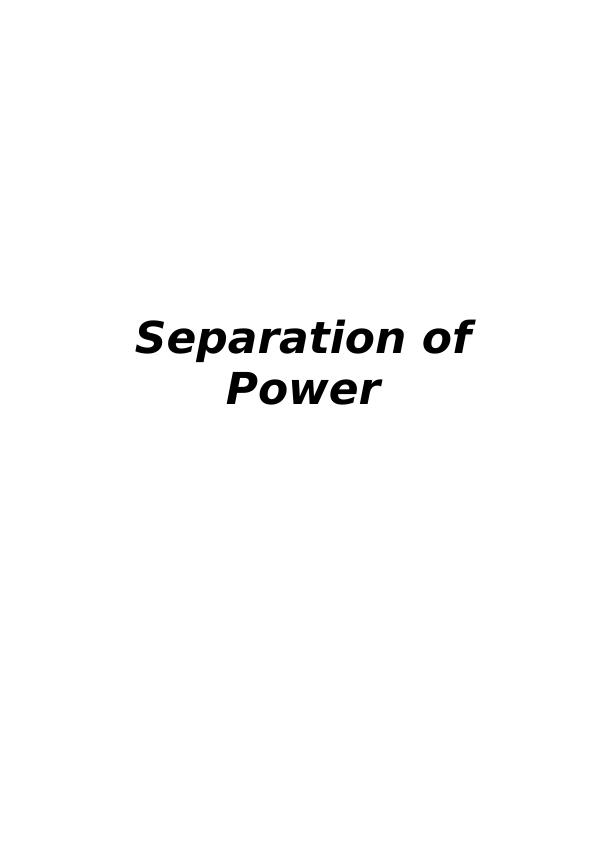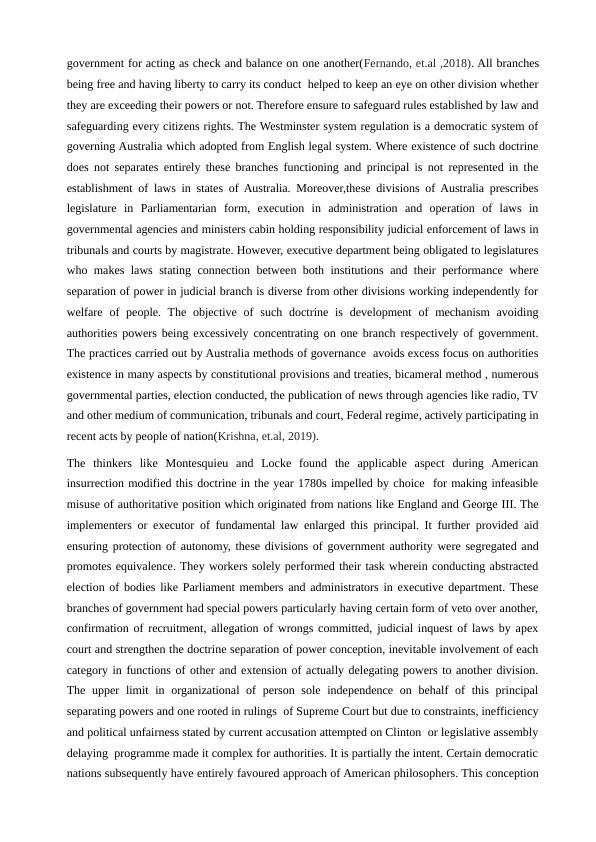Doctrine of Separation of Powers in Australia: An Analysis
Outline the doctrine of the separation of powers and then discuss to what extent it applies at the federal level in Australia.
8 Pages1845 Words169 Views
Added on 2023-06-10
About This Document
This essay discusses the doctrine of separation of powers in Australia, its origins, and its application at the federal level. It covers the roles and obligations of the legislative, executive, and judiciary branches, and how they work together to safeguard citizens' rights.
Doctrine of Separation of Powers in Australia: An Analysis
Outline the doctrine of the separation of powers and then discuss to what extent it applies at the federal level in Australia.
Added on 2023-06-10
ShareRelated Documents
End of preview
Want to access all the pages? Upload your documents or become a member.
Australian Constitution and Contract Formation
|11
|2773
|330
Using ILAC Methodology in Essay and Case Study for Corporate/Business Law
|13
|2957
|420
Understanding the Doctrine of Separation of Powers in Australian Constitution
|13
|3064
|490
Separation of Power and Salisbury Convention
|6
|738
|60
Doctrine of Separation of Powers in Australia and Validity of Contracts
|11
|2629
|346
Separation of Powers in Australia: Extent and Sufficiency
|22
|6837
|231



